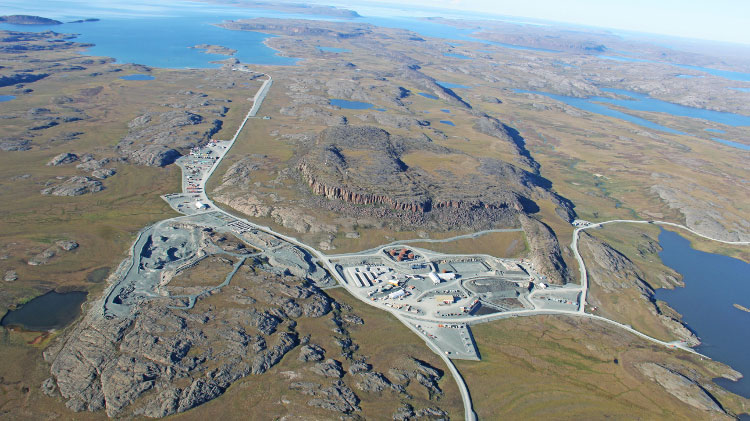An aerial view of Bethlehem Copper’s Jersey open pit (CIM Bulletin, February 1986).
Copper was first discovered in British Columbia’s Highland Valley porphyry copper district in 1899, but production did not start until Bethlehem Copper Corporation’s property began operations in 1962.
Several other large-tonnage, low-grade copper operations were developed in the area, including Lornex Mining Corporation’s Lornex mine (controlled by Rio Algom) in 1972 and Highmont Mining and Teck’s Highmont mine in 1980.
Cominco-controlled Valley Copper Mines discovered another massive porphyry copper deposit, but rapidly escalating capital and operating costs in the 1970s, followed by depressed copper prices, frustrated its attempts to create a development plan. The ore body was also divided by a claim boundary—80 per cent on Valley Copper claims and 20 per cent on Bethlehem Copper claims. “This impediment was finally resolved in 1981 when Cominco purchased 100 per cent ownership of both Valley Copper and Bethlehem [Copper],” said Poul Hansen [CIM Bulletin, August 1987].
Bethlehem’s Jersey pit became completely uneconomical and ceased operations in mid-1982. “Rather than accept the cost of a total shutdown, [Cominco] decided to invest $14 million and develop the much lower-cost Valley ore body as a source of feed for the existing concentrator,” said R.P. Taylor [CIM Bulletin, February 1986]. Milling of Valley ore in the Bethlehem concentrator started in January 1983. The Highmont mine closed in 1984, when it also became uneconomical.
Formation of Highland Valley Copper
Plunging base metal prices set the stage for merging the Lornex and Cominco operations, as neither individual company could achieve the desired profitability. “Despite the expansion of the Lornex mill complex in 1981 to one of the world’s most cost-efficient copper concentrators, persistent low metal prices had made the remainder of the ore in the Lornex ore body marginally economic and had significantly foreshortened the expected life of the operation,” said Hansen.
In 1985, the companies agreed to merge assets into a new entity, and the Highland Valley Copper (HVC) partnership came into effect on July 1, 1986. According to Hansen, the lowering of unit production costs increased annual production by 30 per cent to about 375 million pounds contained copper.
Highmont was brought into the partnership in 1988. “Ownership of the Highland Valley Copper operation became Cominco Ltd. 50 per cent, Rio Algom Ltd. 33.6 per cent, Teck Corporation 13.9 per cent and Highmont Mining Ltd. 2.5 per cent,” wrote M.J. Casselman, W.J. McMillan and K.W. Newman [CIM Special Volume 46, 1995].
Teck and Cominco merged in 2001, consolidating their HVC stakes. In 2000, Billiton (now part of BHP) acquired Rio Algom; Teck bought Billiton’s interest in HVC in 2004. In 2016, Teck acquired the remaining 2.5 per cent stake, giving it a wholly owned interest in HVC.
In 2022, HVC produced approximately 44 per cent of B.C.’s total copper production. Teck has proposed extending the life of HVC to at least 2043, which it stated would yield approximately 1.95 million tonnes of additional copper.




